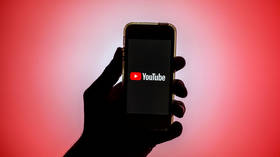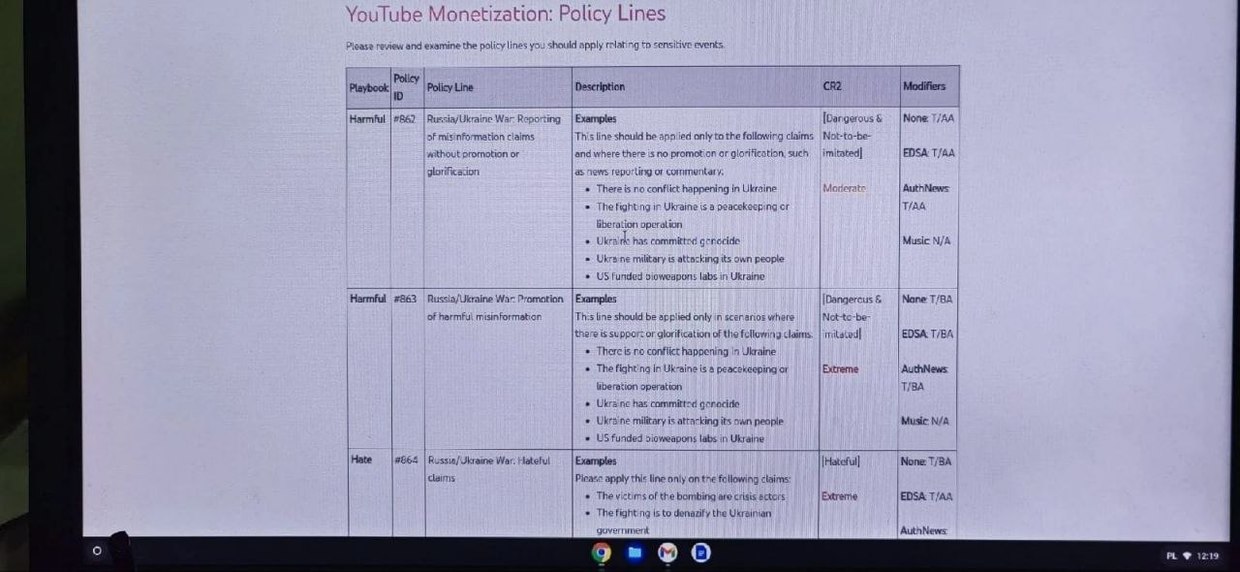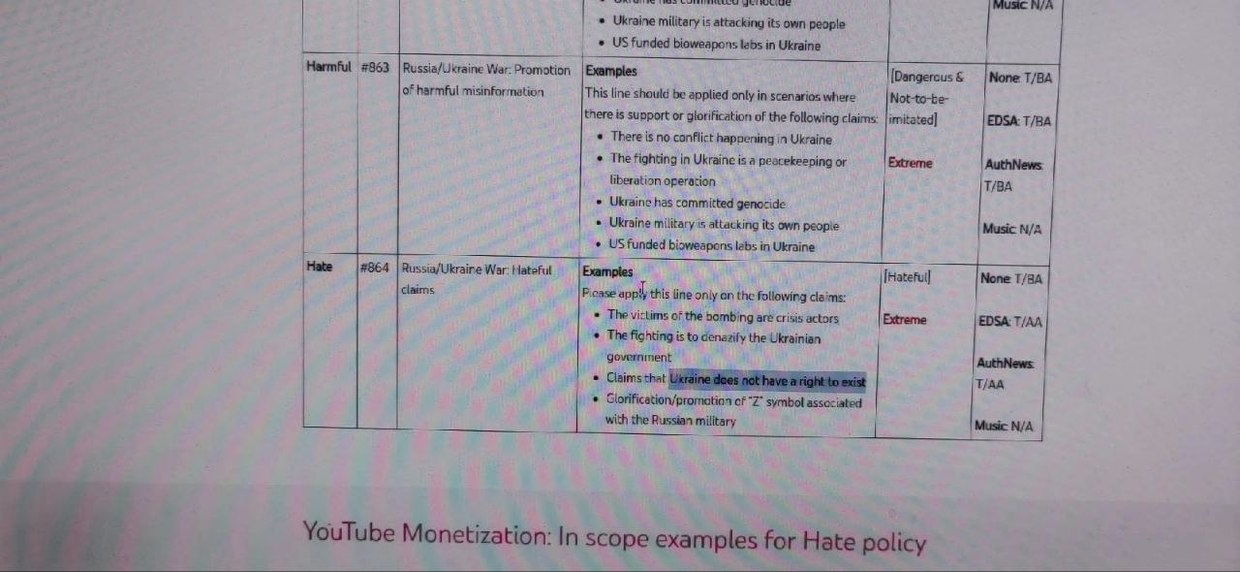Leaked slides detail YouTube’s Ukraine censorship – journalist

A tutorial for YouTube’s content moderators that emerged on social media on Tuesday shows that the Google-owned platform has labeled a number of critical positions on the conflict in Ukraine “hateful” or “extreme” and can censor or demonetize creators on those grounds. While the parent company Alphabet has not confirmed or denied the screenshots’ authenticity, a Polish contractor who shared them has reportedly been fired.
Six screenshots shared by Russian journalist Andrey Guselnikov on Telegram show internal codes and examples of what YouTube has labeled “harmful” or “hateful” content in an online course mandated for content moderators.
According to the slides, the “glorification/promotion of [the] ‘Z’ symbol associated with the Russian military” is labeled “hate” and “extreme” under policy ID 864. So is saying that the conflict “is to denazify the Ukrainian government,” which is what Russian President Vladimir Putin said in February.

Saying that “Ukraine military is attacking its own people” is also considered problematic, ranging from “harmful-misinformation-moderate” (ID 862) to “harmful-misinformation-extreme” (ID 863) if the powers that be decide it amounts to “promotion or glorification.”
There was no clarification whether either standard would apply to factual reports of Ukrainian artillery targeting Ukrainian citizens living in territories under Russian control, for example.

Another highlighted phrase under policies 862 and 863 is “US funded bioweapons labs in Ukraine.” Presumably the key word here is “bioweapons,” since the existence of “biological research facilities” in Ukraine was recognized by US Under Secretary of State Victoria Nuland in a Senate testimony in March, and the Russian military has repeatedly presented evidence that these labs were funded by the US government, and the Pentagon in particular.
One of the slides shows a list of “out of scope” claims, noting there is no “full-scale block on all content” related to the conflict.
According to Guselnikov, the source of the leaked slides is a Polish national named Kamil Kozera, who used to work for Majorel, a contractor hired by YouTube for content moderation. YouTube somehow identified Kozera from the screenshots and had him fired over the leak. RT cannot independently verify the authenticity of the screenshots, and has reached out to YouTube for comment.
The video hosting platform, owned alongside Google by the Silicon Valley behemoth Alphabet, took the unprecedented step in censorship by globally blocking RT, Sputnik and all channels “associated with Russian state-funded media” in early March, expanding on the original ban ordered by the EU authorities in their jurisdiction. It also “paused” all advertising and “all of the ways to monetize” on the platform – such as sponsorships and superchats – in Russia.
Speaking at the World Economic Forum in Davos in May, YouTube CEO Susan Wojcicki said that the company continues to operate in Russia so it can “deliver independent news” to Russians, noting that “What we’re really seeing in this conflict is that information does play a key role, that information can be weaponized.”














